Rosieres RHD6IN Handleiding
Bekijk gratis de handleiding van Rosieres RHD6IN (12 pagina’s), behorend tot de categorie Afzuigkap. Deze gids werd als nuttig beoordeeld door 40 mensen en kreeg gemiddeld 5.0 sterren uit 20.5 reviews. Heb je een vraag over Rosieres RHD6IN of wil je andere gebruikers van dit product iets vragen? Stel een vraag
Pagina 1/12

INSTRUCTIONS FOR INSTALLATION AND USE
MONTAGE- UND GEBRAUCHSANWEISUNG
INSTRUCTIONS POUR L'INSTALLATION ET L’UTILISATION
ISTRUZIONI PER L'INSTALLAZIONE E L’USO
INSTRUCCIONES PARA INSTALACIÓN Y USO
INSTRUÇÕES DE INSTALAÇÃO Y UTILIZAÇÃO
AANWIJZING VOOR GEBRUIK EN INSTALLATIE

ENGLISH
DESCRIPTION
The unit can be found in filtering hoods or in exhaust hoods. In the Filtering hoods (Fig. 1) the air and steam
taken up by the unit are purified with charcoal filters and returned to the environment through the aeration grids on
the side of the flue. WARNING: When using filtering hoods, both charcoal filters and a baffle must be used. Located
in the upper part of the flue, this baffle recycles the air to the environment (Fig. 1A). In the Ducting hoods (Fig. 2)
an exhaust duct conveys the steam and cooking odors directly outside through the wall/ceiling. Therefore they do
not require charcoal filters.
INSTALLATION
Remove the grease filters before proceeding with the assembly instructions. This will make the appliance easier
to handle. To remove the grease filters (Fig. 3): this is carried out by pushing the relative catch inwards and turning
it downwards until it disengages from the supports. Proceed with these instructions in reverse when refitting the filters.
Wall fixing with brackets (Fig. 4): Make all the necessary holes on the wall using the relative boring template.
Apply the supplied brackets to the wall using the relative screws and screw anchors. Before installing the hood, check
that the bracket fixing screws (A) have been sufficiently slackened to allow the hood itself to be fitted in place.
Now fit on the hood using the relative rectangular slots situated at the rear of the appliance. Since these coupling slots
are dimensionally larger than the brackets, the horizontal position of the appliance can be adjusted by sliding to the
right or left in order to align the equipment. The appliance can be regulated in height by means of the relative bracket
adjuster screws (B). Once having regulated the equipment, fix everything in place by tightening screws A and inserting
safety screws C .
Installation with the rear panel (Fig. 5): The rear metal panel must be fixed to the wall in the upper part of
the hob. Rest the lower edge of the panel behind the hob and fix the upper edge to the wall by means of the two
holes in the panel itself, inserting the supplied screws and screw anchors (A). The appliance should be fixed to the
rear panel in the same way as wall fixing, using the supplied hood brackets and the screws and screw anchors
supplied with the panel (B).
Securing the decorative flues: basic installation requirements: – Set the electrical power supply within the
space covered by the decorative flues. – If your unit is installed in Ducting version, prepare the air exhaust hole.
In the Ducting version, to get optimal conditions the air venting pipe should:
– be as short as possible. – have the lowest number of bends (max bende angle: 90°). – be made of material
approved by local authorities (according to the State). – have its inner side as regular and smooth as possible.
It is moreover recommended to avoid drastic changes of pipe cross section (recommended diameter: 150 mm).
Using the supplied screws and screw anchors, fix the upper flue bearing bracket to the ceiling and/or wall,
checking that it is aligned with the hood (Fig. 6). Prepare the decorative flues, remembering that their final position
must be that illustrated in Fig.7. The air disposal gratings in the filtering version must be positioned in the upper part.
For the ducting version turn upside down the upper flue so that the air disposal gratings are downwards.
Ducting version : Connect the air outlet pipe to the air vent of the hood. Use a flexible pipe and lock it to the air vent
of the hood with a metal hose clamp (pipe and clamp are not provided). Make the electrical connection of the hood.
Take the telescopic flues and check that they are coupled properly: the openings in the upper flue must be positioned
at the bottom so that they are hidden; if necessary, turn around the upper flue. Insert the telescopic flues resting them
on the hood. Lift the upper flue up to the ceiling and fix it to the bracket with the 2 screws (A) – Fig. 8.
Filtering version : Separate the telescopic flues and take the upper flue (the one with the air openings) and fix the
baffle to it with the 4 screws provided (Fig. 9). Connect a 150-diameter flexible pipe (Fig. 9B) to the baffle, locking
it with a metal hose clamp (pipe and clamp are not provided). Reassemble the 2 pipes (the air openings must be at
the top) and rest them on the hood. Lift the upper flue up to the ceiling and fix it with the 2 screws (A) – Fig. 8. Lift
the lower flue holding it firm with adhesive tape and connect the flexible pipe to the flange of the hood. Make the
electrical connection of the hood. Bring down the lower flue resting it gently on the hood.
OPERATION
Controls (Fig. 10): A = light switch. B C = motor ON/OFF switch – speed I. = speed II switch; pressed a second
time, the timer is activated and the motor turns off after 10’: the relevant LED flashes continuously. D = speed III
switch; the timer acts as for switch C. E = speed IV switch; the timer acts as for switch C.
Pay special attention to the grease filters: the filters must be cleaned about every 30 hours of operation (all the LEDs
flash simultaneously). To remove the grease filters, unlocking the special lock, pushing the filters towards the inside and
making them rotate downwards until they get out of their bearing (Fog. 3). Wash the filters with a neutral detergent. When
the clean filters have been remounted, press one of the three speed buttons to restart the counter.
When using the filtering version of the appliance, the must be changed according to use, usually charcoal filters
every six months. Remove the filters rotating them and replace them rotating into the opposite direction (Fig. 11).
Lighting: Depending on the model purchased, see Fig. 12, Fig. 13 or Fig. 14.
Fig. 12: to change the light bulb, remove the cover after having desinserted the locking screw. Replace with a bulb of the
same type.

Fig. 13: if the halogene bulbs need changing, slacken the ring nut in an anticlockwise direction and remove the bulb itself.
Replace with a bulb of the same type.
Fig. 14: to change the rectangular halogene bulbs open the cover and remove the bulb without touching it with bare
hands. Replace with a bulb of the same type.
DEUTSCH
BESCHREIBUNG
Das Gerät kann in Umluftversion und in Abluftversion geliefert werden. In der Umluftversion (Abb. 1) werden die
durch das Gerät geleitete Luft und der Dampf durch Kohlefilter gereinigt und dann über die seitlichen Lüftungsgitter der
Haube wieder in Zirkulation gebracht. ACHTUNG! Beim Einsatz der Umluftversion müssen die Kohlefilter zusammen mit
einer Umluftweiche eingesetzt werden, der in den oberen Kaminschacht montiert wird und die Rückführung der Luft in die
Umgebung ermöglicht (Abb. 1A). In der Abluftversion (Abb. 2) werden die Dämpfe und Küchengerüche direkt über einen
Abzugskanal in der Wand oder Decke nach außen abgezogen. Daher sind keine Kohlefilter notwendig.
INSTALLATION
Vor der Montage sind zum Zwecke einer einfacheren Handhabung des Geräts die Fettfilter herauszunehmen
(Abb.3). Diese werden hierzu an der entsprechenden Feststellvorrichtung leicht nach innen gedrückt und nach unten
drehend aus der Halterung gezogen. Eingesetzt werden die Fettfilter im umgekehrten Handlungsablauf.
Wandmontage des Geräts mit Bügel (Abb. 4): Mit Hilfe der eigens dazu vorgesehenen Bohrschablone sind alle
darauf eingezeichneten Bohrungen in der Wand auszuführen. Unter Verwendung der mitgelieferten Schrauben und Dübel
sind die zur Ausstattung gehörenden Bügel an der Wand anbringen. Bevor die Haube eingehängt wird, ist darauf zu achten,
dass die Befestigungsschrauben der Bügel (A) so weit gelöst sind, daß die Haube problemlos eingehängt werden kann.
Dann die Haube mit den entsprechenden rechteckigen Einhängeöffnungen, die sich an der Rückwand des Gerätes
befinden, einhängen. Da die Einhängeöffnungen in der Geräterückwand breiter sind als die Bügel, kann das Gerät zur
waagerechten Feinausrichtung entsprechend der Fluchtung der Oberschränke nach links und rechts verschoben werden.
Die Höhenregulierung des Geräts erfolgt durch Verstellen der Regulierschrauben an den Bügeln (B). Nach genauer
Einstellung der endgültigen Position werden die Befestigungsschrauben (A) fest angezogen. Zusätzlich werden die
Sicherungsschrauben (C) eingesetzt.
Montage des Geräts auf Stahlrückwand (Abb. 5): Zunächst wird die Stahlrückwand an der Wand über dem
Kochfeld montiert. Hierzu wird der untere Rand der Rückwand hinter dem Kochfeld aufgesetzt und der obere Rand an den
beiden eigens dazu vorgesehenen Bohrungen in der Rückwand unter Verwendung der mitgelieferten Schrauben und
Dübel (A) an der Wand verankert. Die weitere Befestigung des Geräts auf der Stahlrückwand erfolgt analog zur
Wandbefestigung (B). Hierbei sind die mit der Haube mitgelieferten Bügel (B) und die mit der Stahlrückwand mitgelieferten
Schrauben und Dübel zu verwenden.
Befestigung der Teleskopkamine : Wichtige Montagevoraussetzungen: – Die Stromversorgung im dekorativen
Rohr unterbringen. – Wird ein Gerät in Abluftversion installiert, ist eine Abluftöffnung vorzusehen.
Um die bestmöglichen Vorbedingungen zu erreichen, ist es zu empfehlen, bei Abluftversionen einen Abluftkanal mit
folgenden Eigenschaften zu verwenden: – unverzichtbare Mindestlänge und – möglichst geringe Anzahl von Kurven
(Maximalwinkel der Kurve = 90 Grad). – Es müssen normgerechte (je nach Staat) Materialien verwendet werden. –
Innenseite möglichst glatt.
Außerdem ist es ratsam, drastische Veränderungen des Rohrquerschnittes zu vermeiden (empfohlener Durchmesser:
150 mm).
Den oberen Haltebügel des Telekopkamins mit den mitgelieferten Schrauben und Dübel an der Decke und/oder an der
Wand befestigen. Dabei ist darauf zu achten, dass er sich auf einer Achse mit Ihrer Haube befindet (Abb. 6). Bei der
Vorbereitung der Teleskopkamine ist zu berücksichtigen, dass ihre endgültige Position der auf der Abb. 7 dargestellten
Position entsprechen muss. Bei der Abluftversion ist das Kaminoberteil so umzudrehen, dass sich die Abluftgitter unten
befinden.
Abluftversion: Den Abluftkanal an die Luftaustrittsöffnung der Haube anschließen; dazu einen Schlauch verwenden und
ihn mit einer Metallschelle an der Luftaustrittsöffnung der Haube befestigen (Schlauch und Schelle werden nicht
mitgeliefert). Den elektrischen Anschluss herstellen.
Die Teleskopkamine nehmen und überprüfen, ob sie in der richtigen Weise gekoppelt sind: die auf dem Oberkamin
vorhandenen Öffnungen müssen so nach unten positioniert werden, dass sie nicht zu sehen sind; gegebenenfalls den
Oberkamin umdrehen. Die Teleskopkamine einfügen, sie dazu auf der Haube auflegen; den Oberkamin bis zur Decke
führen und mit den 2 Schrauben (A) an dem Bügel befestigen - Abb. 8.
Umluftversion: Die Teleskopkamine trennen und den Oberkamin (mit den Luftöffnungen) nehmen, die Umluftweiche mit
den mitgelieferten 4 Schrauben daran befestigen - Abb. 9.
Einen Schlauch mit Durchmesser 150 (Abb. 9B) an die Umluftweiche anschließen und ihn mit einer Metallschelle
befestigen (Schlauch und Schelle werden nicht mitgeliefert). Die beiden Kamine wieder zusammensetzen (die Luftöffnungen
müssen sich oben befinden) und sie auf die Haube legen; den Oberkamin bis zur Decke führen und mit den 2 Schrauben
(A) befestigen - Abb. 8. Den Unterkamin anheben, mit Klebeband befestigen und den Schlauch mit dem Luftstutzen der
Haube verbinden. Den elektrischen Anschluss herstellen. Den Unterkamin senken und vorsichtig auf die Haube legen.
Product specificaties
| Merk: | Rosieres |
| Categorie: | Afzuigkap |
| Model: | RHD6IN |
| Soort bediening: | Knoppen |
| Kleur van het product: | Zilver |
| Breedte: | - mm |
| Hoogte: | - mm |
| Geluidsniveau: | 60 dB |
| Soort: | Muurmontage |
| Uitlaat aansluiting diameter: | 150 mm |
| Materiaal behuizing: | Roestvrijstaal |
| Maximale afzuigcapaciteit: | 620 m³/uur |
| Aantal lampen: | 2 gloeilamp(en) |
| Type lamp: | Halogeen |
| Soort vetfilter: | Metaal |
| Vermogen lamp: | 20 W |
| Aantal filters: | 3 stuk(s) |
| Aantal snelheden: | 4 |
| Vaatwasserbestendig filter: | Ja |
| Ingebouwde functie: | Ja |
Heb je hulp nodig?
Als je hulp nodig hebt met Rosieres RHD6IN stel dan hieronder een vraag en andere gebruikers zullen je antwoorden
Handleiding Afzuigkap Rosieres

14 December 2024

14 December 2024

14 December 2024

14 December 2024

14 December 2024

4 November 2024

31 Juli 2024

31 Juli 2024
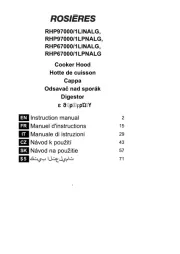
31 Juli 2024

31 Juli 2024
Handleiding Afzuigkap
- Coyote
- Siku
- Amica
- Wolf
- Upo
- Progress
- LG
- Esatto
- Zoppas
- Schweigen
- Falcon
- Comfee
- Whispair
- Conia
- KKT Kolbe
Nieuwste handleidingen voor Afzuigkap
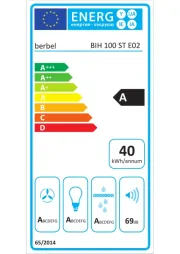
17 September 2025
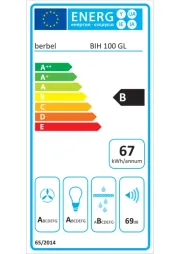
17 September 2025
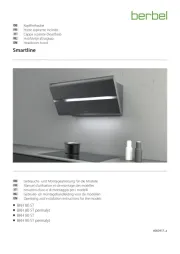
17 September 2025
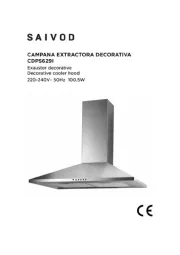
15 September 2025
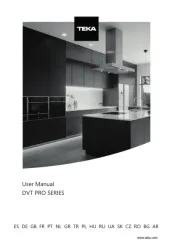
15 September 2025
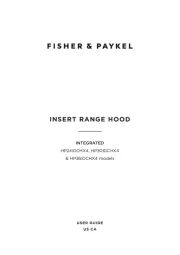
15 September 2025
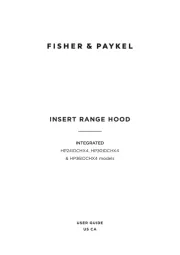
15 September 2025
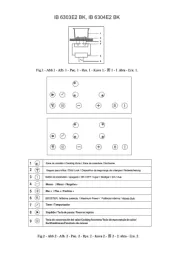
15 September 2025
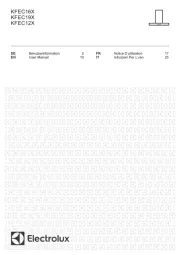
15 September 2025
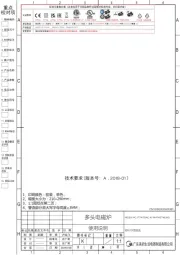
15 September 2025